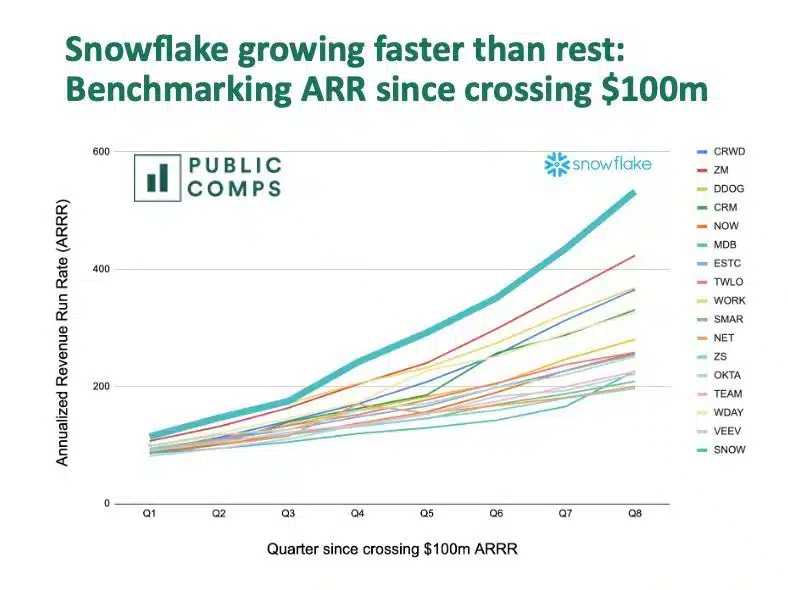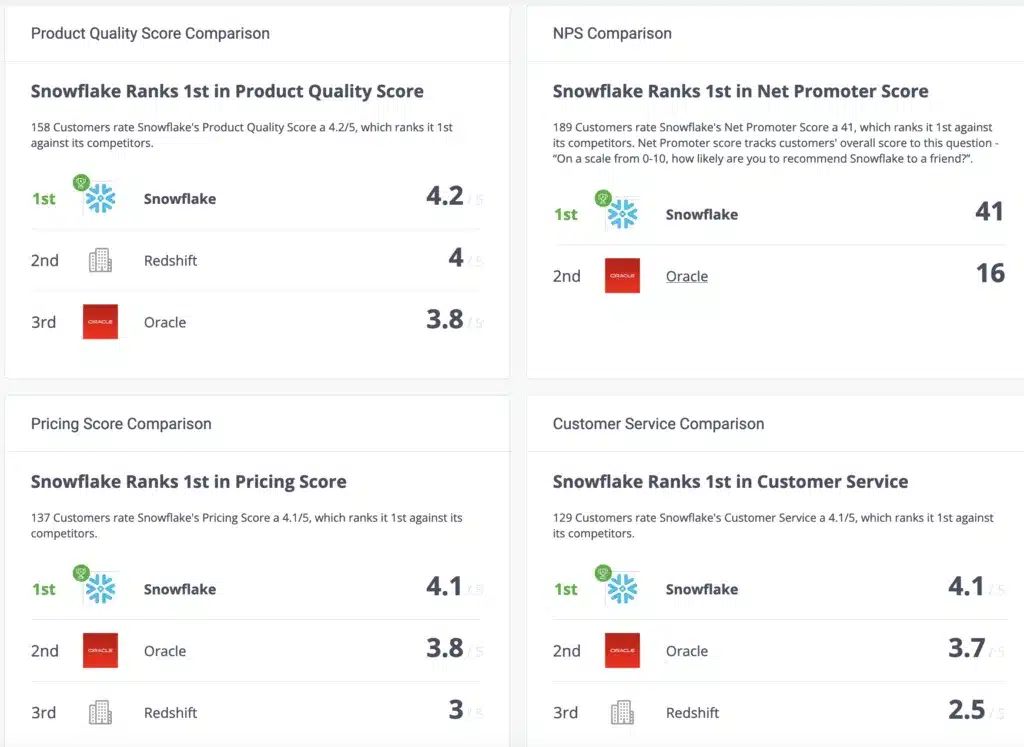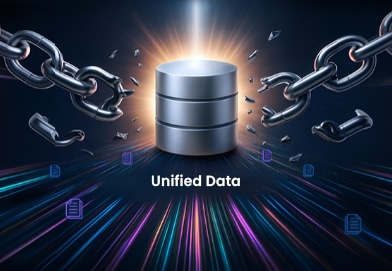Cloud Data Warehouse in Modern Businesses
Businesses today are generating vast amounts of raw data at an unprecedented rate. This data holds valuable insights that can drive informed decision-making, enhance operational efficiency, and unlock new opportunities. However, harnessing the power of data requires a robust infrastructure and sophisticated tools to manage, store, and analyze it effectively.
Data warehousing refers to the process of collecting, organizing, and storing large volumes of structured and unstructured data from various sources in a centralized repository. It provides a comprehensive and unified view of an organization’s entire data, enabling businesses to derive actionable insights. In essence, data warehousing acts as the foundation for successful business intelligence, reporting, and analytics initiatives.
Unlike traditional data warehouse, cloud data warehouses play a critical role in modern businesses by providing scalable, flexible, and cost-effective solutions for storing, managing, and analyzing vast amounts of data. They enable real-time analytics, and advanced analytics, and ensure data security and compliance, empowering businesses to make data-driven decisions, gain valuable insights, and stay competitive in the digital age. But, which vendor provide the best data warehouse solution?
Introducing Snowflake

Amidst the growing need for advanced data warehousing capabilities, Snowflake emerged as a trailblazer in the field in 2012. Snowflake offers a revolutionary cloud data warehouse solution that is transforming the way businesses manage and leverage their data.
Snowflake’s unique architecture and design principles enable organizations to achieve unprecedented levels of scalability, performance, and flexibility. It seamlessly integrates with existing data ecosystems, allowing businesses to ingest, process, and analyze data from various sources, including structured data, semi-structured data, and unstructured data.
Moreover, Snowflake’s built-in security measures and compliance standards ensure that sensitive data is protected, addressing the increasing concerns around data privacy and regulatory compliance. Its intuitive user interface and ease of use empower both technical and non-technical users to explore and derive insights from data without extensive programming knowledge.
In the following sections, we will dive deeper into the benefits of Snowflake as the ultimate data warehouse solution for businesses including Finance industry.. By harnessing the power of Snowflake, organizations can unlock the full potential of their data and gain a competitive edge in today’s data-driven world.
The Rise of Snowflake Computing
Overview of Snowflake
Snowflake has experienced a remarkable journey since its inception, rapidly establishing itself as a frontrunner in the data warehouse arena. Founded in 2012, Snowflake has revolutionized the data management landscape with its innovative approach and cloud-based architecture.
Snowflake’s founders recognized the limitations and challenges posed by traditional data warehousing solutions, such as complex infrastructure management, lack of scalability, and rigid pricing models. In response, they developed a disruptive architecture that separates compute and storage, allowing businesses to scale resources independently based on their needs. This fundamental architectural shift eliminates the bottlenecks and constraints associated with traditional data warehouses, empowering organizations to efficiently manage and process a high volume of data.
Snowflake’s Disruptive Architecture
Snowflake architecture is built on a foundation of three core principles: elasticity, simplicity, and affordability. These principles drive Snowflake’s ability to handle massive workloads, enable seamless data integration, and provide a cost-effective solution for businesses of all sizes.
Elasticity
Snowflake’s cloud-native architecture allows organizations to scale their data warehousing resources up or down on demand. This elasticity ensures optimal performance, even during peak usage periods, while avoiding unnecessary costs during periods of lower demand. With Snowflake, businesses can dynamically adjust their compute and storage resources to accommodate fluctuating workloads and growing data volumes.
Simplicity
Snowflake simplifies data warehousing through its intuitive user interface and powerful SQL language-based query. Business users and data analysts can easily access and analyze data with simple SQL statements, reducing dependencies on IT teams. Snowflake’s intuitive design streamlines the data loading process, query execution, and data sharing, making it a user-friendly and efficient solution.
Affordability
Snowflake’s pricing model aligns with the actual resources consumed by organizations. Unlike traditional data warehouses, Snowflake does not require upfront hardware investments or long-term commitments. Businesses can pay only for the storage and compute resources they utilize, optimizing costs and delivering significant savings. Snowflake’s transparent pricing structure and flexibility make it an attractive option for businesses seeking a cost-effective data warehousing solution.
Industry Recognition of Snowflake

Snowflake Computing has experienced exceptional market traction, gaining widespread recognition and adoption across various industries. As organizations grapple with the challenges of managing and extracting value from massive datasets, many have turned to Snowflake for its unrivaled capabilities.
Snowflake’s agile and scalable cloud data platform has garnered the attention of industry leaders. Additionally, Snowflake’s customer base continues to expand rapidly, with companies ranging from startups to Fortune 500 enterprises leveraging its power to fuel innovation and extract actionable insights.
From its ability to handle massive workloads to its advanced security measures, Snowflake continues to set new benchmarks in the data warehousing space.
Key Benefits of Snowflake

Scalability and Elasticity
Snowflake cloud services provide unparalleled scalability and elasticity, enabling businesses to effectively tackle the challenges associated with big data. Snowflake’s cloud-native architecture allows organizations to seamlessly scale their data warehouse resources up or down, based on demand, without any disruptions to ongoing operations.
With Snowflake, businesses can effortlessly accommodate growing data volumes and fluctuating workloads. Its ability to handle massive concurrency and automatically optimize query performance ensures fast and reliable data processing, even when dealing with complex analytical workloads. Snowflake’s elastic scalability ensures that organizations can easily adapt to evolving business needs and effectively manage their data growth without compromising performance.
Separation of Compute and Storage
One of Snowflake’s distinctive advantages lies in the separation of compute and storage. Unlike traditional data warehouses, Snowflake decouples these two components, allowing organizations to independently scale them based on specific requirements.
This separation results in optimal performance, as compute instances can be dynamically allocated to process queries without contention from data storage operations. By decoupling storage and compute, Snowflake eliminates resource bottlenecks, enabling faster query execution and enhanced user experiences.
Furthermore, Snowflake’s separation of compute and storage leads to significant cost efficiency. Organizations only pay for the actual compute resources utilized during query execution, reducing costs associated with idle resources. Snowflake’s efficient data compression techniques further optimize storage costs, ensuring businesses can effectively manage their data at a lower total cost of ownership.
Multi-Cloud Flexibility with Various Platforms
Snowflake Computing offers multi-cloud flexibility, empowering organizations to choose the cloud data platform that best aligns with their needs. Snowflake is available on major cloud providers, including Amazon Web Services, Azure, and Google Cloud, allowing businesses to leverage their preferred cloud infrastructure while benefiting from Snowflake’s powerful data warehousing capabilities.
Additionally, Snowflake seamlessly integrates with various platforms and tools, providing a unified ecosystem for data management and analytics. It offers robust connectors and APIs, enabling organizations to ingest and integrate data from diverse sources such as databases, data lakes, and streaming platforms. Snowflake’s compatibility with popular analytics and visualization tools further enhances its versatility and usability within existing data ecosystems.
By providing multi-cloud infrastructure environments and seamless integration, Snowflake ensures that organizations can leverage their existing investments and infrastructure while gaining the advantages of a modern and scalable data warehouse solution.
Massively Parallel Processing
Snowflake platform utilizes massively parallel processing (MPP) to achieve high performance and scalability. MPP is a technique used to process and analyze large amounts of data by distributing the workload across multiple nodes in a parallel processing environment.
Snowflake employs multiple compute clusters, each consisting of a set of compute resources or virtual warehouses. These clusters work in parallel to execute queries and perform data operations. By dividing queries into smaller tasks, Snowflake can execute them concurrently across the compute resources, harnessing the power of parallelism.
Furthermore, to optimize data processing, Snowflake adopts data partitions and micro partitions. Data partitioning involves horizontally splitting large datasets into smaller partitions, allowing for parallel processing across multiple nodes. Additionally, each partition is further divided into micro partitions, enabling efficient data pruning and selective reading during query execution. This optimization process maximizes parallelism and minimizes data movement, resulting in faster query performance.
Snowflake Advanced Security Features and Compliance Standards

Snowflake prioritizes data security and provides robust features to safeguard sensitive information. As a cloud-based data warehouse solution, Snowflake incorporates industry-leading security practices to protect data at every level.
Snowflake employs end-to-end encryption to ensure data confidentiality both in transit and at rest. Data is encrypted using strong encryption algorithms, and access to the data is controlled through granular access controls and role-based permissions. Snowflake’s security measures comply with rigorous industry standards, such as SOC 2 Type II, HIPAA, GDPR, and PCI DSS, giving organizations peace of mind when it comes to regulatory compliance.
Furthermore, Snowflake’s architecture ensures data isolation and multi-tenancy security, preventing unauthorized access and ensuring that each customer’s data is securely separated. Snowflake’s continuous vulnerability scanning, threat detection, and comprehensive auditing capabilities further enhance the security posture, enabling organizations to meet their compliance requirements and protect sensitive data effectively.
Snowflake Intuitive User Interface

Snowflake places a strong emphasis on user experience and provides an intuitive user interface that simplifies data management and analysis. The user-friendly interface enables both technical and non-technical users to interact with data easily, reducing dependencies on IT teams and empowering business users to derive insights directly.
Snowflake’s intuitive SQL queries enable users to write and execute queries without the need for extensive programming knowledge. The platform offers a wide range of built-in functions and analytical capabilities, making it easier for users to perform complex analyses and uncover valuable insights from their data.
Moreover, Snowflake’s user interface provides a unified view of the data warehouse, allowing users to navigate through tables, views, and schemas seamlessly. The platform offers intuitive data loading and transformation capabilities, enabling efficient data ingestion and preparation. Snowflake’s user-centric design promotes productivity, streamlines data workflows, and accelerates time-to-insights for organizations.
Snowflake vs Traditional Data Warehousing Solutions

Comparison with On-Premises Data Warehouses
Snowflake Computing represents a paradigm shift from traditional data warehouse solutions. While legacy on-premises data warehouses have served organizations for years, they often come with significant limitations and challenges.
On-premises data warehouses require substantial upfront investments in hardware, infrastructure, and maintenance. Scaling the infrastructure to handle increasing data volumes or concurrent users can be time-consuming and costly. Additionally, organizations bear the responsibility of managing hardware resources, ensuring high availability, and handling software upgrades and patches.
Advantages of Snowflake
Snowflake provides numerous advantages over traditional data warehousing solutions:
Scalability
Traditional data warehouses have limited scalability, requiring significant hardware upgrades or additions to accommodate data growth. In contrast, Snowflake is designed to scale both vertically and horizontally.
Vertical scaling, also known as scaling up, refers to increasing the resources of an individual computing resource, such as a virtual machine or a server, to handle a higher workload. In Snowflake, vertical scaling is achieved by adjusting the size of a virtual warehouse. Vertical scaling is beneficial when a specific query or workload requires additional resources beyond what the existing virtual warehouse can provide.
Horizontal scaling, also known as scaling out, involves adding more computing resources, such as virtual warehouses, to the snowflake architecture to distribute the workload across multiple resources. This approach allows for parallel processing by dividing the workload across multiple compute resources. Horizontal scaling is particularly useful when the workload grows and requires additional processing power and concurrency demands, as it allows Snowflake to distribute the workload across multiple resources, thereby increasing overall capacity and throughput.
Performance
Legacy data warehouses often struggle with query processing, especially when dealing with complex analytical workloads or concurrent users. Snowflake’s unique architecture, separating the compute layer from the storage layer, eliminates contention and bottlenecks. Snowflake’s automatic query optimization and caching mechanisms further enhance computing power, delivering near real-time insights.
Cost-Effectiveness
Traditional data warehouses come with high upfront costs for hardware procurement and ongoing maintenance. Snowflake’s cloud-based architecture eliminates the need for upfront hardware investments and allows organizations to pay only for the resources they use. This pay-as-you-go pricing model provides cost flexibility, enabling Snowflake to reduce operational expenses and ensure optimal resource utilization.
Advanced Analytics Functions
Snowflake provides a wide range of advanced analytics functions, including statistical modeling, time series analysis, and machine learning models. This makes Snowflake a powerful platform for data science tasks.
Data scientists can leverage these functions not only within Snowflake’s SQL-based environment but also in SnowPark, a powerful feature that allows data scientists to write custom code in their preferred programming languages, such as Python or Java, within the cloud environment. This streamlined workflow improves productivity and simplifies the end-to-end machine learning process.
Snowflake vs Cloud-based Competitors

Evaluating Snowflake Against Other Cloud-based Data Warehouse Platforms
In the rapidly evolving landscape of virtual warehouses, Snowflake computing stands out as a leading solution. However, it is essential to evaluate Snowflake cloud solution against its cloud-based competitors to understand its unique advantages and differentiating factors.
Snowflake competes with other cloud-based data warehouse platforms such as Amazon Redshift, SAP Business Warehouse, and Google Big Query. These platforms offer similar cloud-native architectures and promise to deliver scalable, performant, and cost-effective data warehousing solutions.
Amazon Redshift
Snowflake and Amazon Redshift are very similar implementations of clustered data warehouses.
Snowflake is generally a bit more expensive to run than Redshift but is dependent on the underlying technology and business model used.
If you can dynamically compute your data clusters over time and keep tight controls on adding additional clusters, the costs between Snowflake and Redshift are virtually the same.
Google Cloud
Google’s Cloud DataProc is generally regarded as the best-managed Hadoop framework available on the market.
It is known for its speed when scaling up nodes on local SSDs and has often been clocked up to 100 times faster than other solutions.
Microsoft Azure
Microsoft Azure is a well-known data warehouse solution due to its parent company, Microsoft, which is prevalent in the computing world.
Snowflake and MS Azure use different SQL versions, and it is commonly said that Azure’s version (SQL DW) has too many limitations.
Many say that Snowflake has a much more solid pricing structure than Azure and, therefore, a better DWH solution for most businesses doing BI.
Snowflake’s Support for Data Lakes

Snowflake provides seamless integration and robust support for data lakes, allowing organizations to leverage the capabilities of both data lakes and data warehouses within a single platform. With Snowflake, data lakes can be seamlessly accessed and queried alongside structured, columnar data, providing a comprehensive view of the organization’s data assets.
Snowflake facilitates the ingestion of data from popular data lake platforms such as Amazon S3, Microsoft Azure Data Lake Storage (or Azure Blob), and Google Cloud Storage. It supports various data formats commonly used in data lakes, including Parquet, ORC, Avro, and JSON. Snowflake’s advanced optimization techniques ensure efficient querying of data stored directly in the data lake, eliminating the need for data movement or transformation.
Moreover, Snowflake enables the creation of external tables that reference data residing in the data lakes. This allows users to directly query and analyze data in the data lake without requiring data replication or data loading into Snowflake’s storage. This flexibility and cost efficiency empowers organizations to leverage the benefits of the data lake like ad hoc analysis while still utilizing Snowflake’s powerful analytics capabilities.
Additionally, Snowflake offers the capability to export data from Snowflake back into the data lake. This allows organizations to store and archive data in data lakes while taking advantage of Snowflake’s advanced querying features. The data lake export functionality supports popular formats like Parquet and CSV, providing compatibility and interoperability between Snowflake and data lakes.
Snowflake Computing Use Cases
Snowflake Computing’s versatility and powerful data warehousing capabilities make it an ideal solution for various industries and use cases. Let us explore some prominent use cases where Snowflake is making a significant impact.
E-commerce and Retail
Real-time Data Analysis
Snowflake service enables e-commerce companies to analyze customer behavior, purchasing patterns, and website performance in real time, enabling personalized recommendations and targeted marketing campaigns.
In addition to that, snowflake provides transaction management capabilities for e-commerce companies, allowing multiple users to perform transactions simultaneously without interfering with each other. This capability is essential to handle massive volumes of transactions.
Demand Forecasting
By leveraging Snowflake’s scalability and handling massive data volumes, retailers can perform advanced demand forecasting to optimize inventory management, minimize stockouts, and improve supply chain efficiency.
Financial Services
Fraud Detection
Snowflake’s ability to handle high data volumes and perform complex analytics enables financial institutions to detect and prevent fraudulent activities in real time, enhancing data protection and securing customer assets.
Risk Modeling and Compliance
Snowflake’s powerful computational capabilities and multi-cloud support empower financial organizations to perform risk modeling, stress testing, and compliance reporting efficiently, enabling decision-making and regulatory adherence.
Healthcare and Life Sciences
Precision Medicine
Snowflake’s ability to handle large-scale genomic and healthcare data enables healthcare providers and researchers to analyze patient data, genetic profiles, and medical research for personalized treatment approaches and advancements in precision medicine.
Clinical Data Integration
Snowflake’s seamless integration and capabilities allow healthcare organizations to aggregate and analyze clinical data from various sources, facilitating data-driven insights, improved patient outcomes, and streamlined healthcare operations.
Media and Entertainment
Content Personalization
Snowflake empowers media and entertainment companies to leverage customer data, viewing habits, and content metadata management to deliver personalized recommendations, and targeted advertisements, and enhance the overall user experience.
Audience Analytics
With Snowflake’s scalability and real-time processing capabilities, media organizations can analyze viewership data, social media sentiment, and engagement metrics to understand audience preferences, optimize content strategies, and drive viewership.
Manufacturing and Supply Chain
Supply Chain Optimization
Snowflake’s scalability and real-time analytics enable manufacturers to gain visibility into their supply chains, track inventory levels, predict demand fluctuations, and optimize production and distribution processes.
Quality Control and Predictive Maintenance
Snowflake’s ability to handle sensor data and perform advanced analytics facilitates predictive maintenance and quality control in manufacturing, reducing equipment downtime, minimizing defects, and improving overall product quality.
Transition to Snowflake

Factors to Consider When Migrating to Snowflake
When considering a migration to Snowflake, there are several key factors to keep in mind:
Data Assessment
Conduct a thorough assessment of your existing data infrastructure, including data sources, volumes, and formats. Evaluate the compatibility and readiness of your data for migration to Snowflake.
Business Requirements
Understand your organization’s specific business requirements and data analytics goals. Determine how Snowflake can align with and address these requirements to maximize the value of your data.
Data Governance and Security
Consider your data governance and security policies. Determine how Snowflake supports your compliance needs and ensure data privacy and security throughout the migration process and beyond.
Integration and Ecosystem
Assess your current data integration tools, applications, and ecosystem. Evaluate Snowflake’s compatibility and integration capabilities with your existing systems, ensuring a seamless transition and minimal disruption.
Planning and Implementation
To ensure a successful transition to Snowflake, follow these best practices:
Define Clear Objectives
Establish clear migration objectives, timelines, and success criteria. Define key performance indicators to measure the success of the migration and track progress against your goals.
Define Clear Objectives
Develop a comprehensive data migration strategy that includes data extraction, transformation, and loading (ETL) processes. Consider utilizing Snowflake’s native data loading capabilities, partner integrations, or custom complex data pipelines to streamline the migration process.
Performance Optimization
Optimize your data model and queries to take advantage of Snowflake architecture. Leverage Snowflake’s features such as clustering, materialized views, and query profiling to improve query performance and overall system efficiency.
User Training and Adoption
Invest in training and enablement programs to familiarize users with Snowflake’s interface, query language, and features. Promote adoption and provide ongoing support to ensure a smooth transition for your users.
Partnering with Snowflake Experts
To facilitate a successful transition, consider partnering with Snowflake experts and leveraging available resources:
Snowflake Consulting Partners
Engage with Snowflake’s network of consulting partners who specialize in data migration, architecture design, and optimization.
At Data Sleek, we specialize in Snowflake computing and can apply our expertise in this field to your data warehouse migration and implementation.
We have years of experience with small and medium-sized business customers. If you are seriously considering moving to a Snowflake data warehouse, we would love to speak with you.
Let Data Sleek be your go-to Snowflake Computing experts.
If you are interested in learning more about how we use Snowflake computing, book a free consultation with one of our data experts or fill out our questionnaire.
Snowflake Documentation
Leverage Snowflake’s comprehensive documentation, tutorials, and free online courses. These resources offer insights into best practices, troubleshooting guides, and tips for maximizing the benefits of Snowflake.
Snowflake Community
Join the Snowflake Community, an online forum where users and experts share their experiences, ask questions and collaborate. Engaging with the community can provide additional insights, solutions, and support during your migration journey.
Conclusion: Is Snowflake the best data warehouse solution ?
In conclusion, Snowflake Computing is one of the best data warehouse solution out there. With its extensive documentation, tutorials, and online courses, users can maximize the benefits of Snowflake and troubleshoot effectively. Additionally, engaging with the Snowflake Community provides an opportunity to collaborate with experts and gain valuable insights for a successful migration journey.







